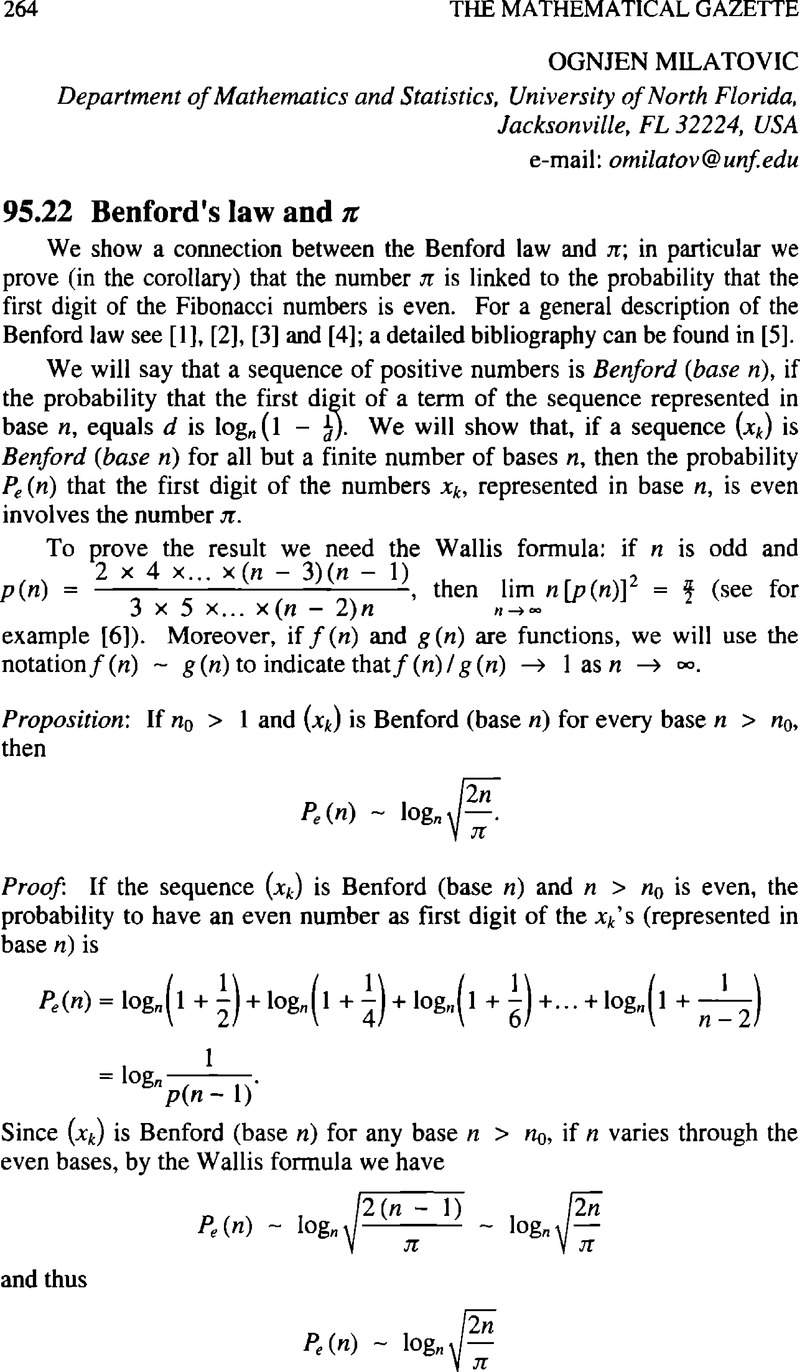No CrossRef data available.
Article contents
95.22 Benford's law and π
Published online by Cambridge University Press: 23 January 2015
Abstract
An abstract is not available for this content so a preview has been provided. Please use the Get access link above for information on how to access this content.

- Type
- Notes
- Information
- Copyright
- Copyright © The Mathematical Association 2012
References
1.
Hill, T. P., The significant-digit phenomenon, Amer. Math. Monthly
102 (Apr. 1995) pp. 322–327.Google Scholar
2.
Hoare, G. T. Q. and Wright, E., The distribution of first significant digits, Math. Gaz.
70 (1986) pp. 34–37.Google Scholar
3.
Miller, S. J. and Takloo-Bighash, R., An invitation to modern number theory, Princeton University Press (2006).Google Scholar
4.
Turner, P. R., The distribution of l.s.d. and its implications for computer design, Math. Gaz.
71 (1987) pp. 26–31.Google Scholar




